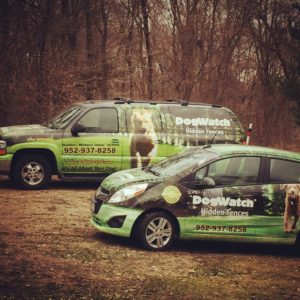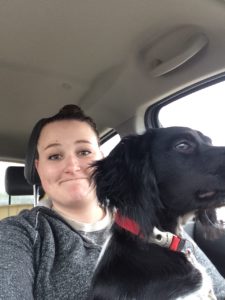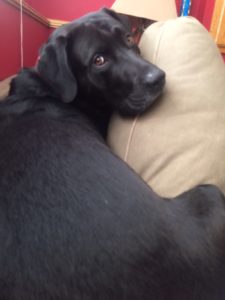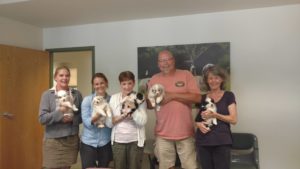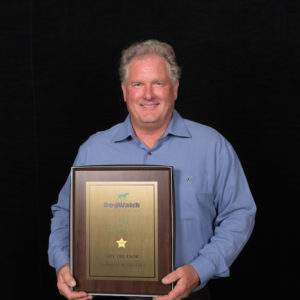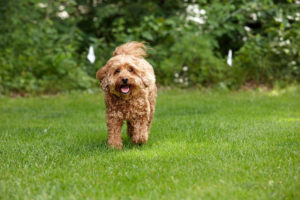Behind the Scenes
DogWatch of the Twin Cities is owned by Guy Treanor and he employs his daughter Afton and her husband Jake. If you meet us, it’s almost always just for a few hours at your house. So what’s going on the rest of the time?
First of all, we’re on the road a lot. If you ever see a DogWatch vehicle, give us a wave. You can’t miss us! Our cars are stocked with DogWatch parts so we’re ready for anything. And they’re a little dirty from the mud on our boots and the dogs we cart around with us, but we wouldn’t have it any other way.
We work out of our houses. Most of our time is spent at customers’ houses and on the road, so there’s no need for a fancy DogWatch office. But we do have customers stop by Guy’s house in Eden Prairie once in a while to pick up a battery or have their collar tested. Since we work out of our houses, our dogs become our coworkers. Tripp is excellent in the car, and Moose is excellent on the couch.
DogWatch of the Twin Cities is a local dealer of DogWatch products, and there are dealers around the country and around the world. The DogWatch corporate employees and other dealers are a huge part of our life behind the scenes. The support we receive from DogWatch Inc. in Massachussets is amazing. That’s where all DogWatch products are assembled and tested.
Each February, the DogWatch dealers and corporate employees get together for an annual meeting. Lucky for us it’s always someplace warm, typically in Florida or California. We learn about new products and smart ways to run the business, and dealers receive recognition for their achievements of the past year.
Working at DogWatch of the Twin Cities is a pretty good gig thanks to nice customers, fun pets and support from DogWatch, Inc.
